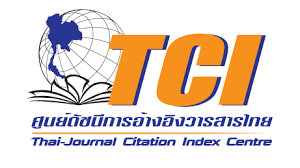Effect of compaction pressure on the structure and mechanical properties of functionally graded aluminium-glass microsphere (FGAGM) foams produced by powder metallurgy process
DOI:
https://doi.org/10.55713/jmmm.v35i4.2432Keywords:
Functionally graded materials, Glass microsphere, Powder metallurgy, Metal-matrix composite, Mechanical propertyAbstract
Functionally graded aluminium-glass microsphere (FGAGM) foams were successfully fabricated via powder metallurgy. The influence of compaction pressure on the structural and mechanical properties of the foams was systematically investigated. The study observed that increasing compaction pressure enhanced the green (pre-sintering) density of FGAGM foam, while post-sintering densities exhibited a decreasing trend with higher compaction pressures. The mechanical examination indicated that mechanical properties improved significantly with higher compaction pressures. While higher compaction pressures generally improve mechanical properties, the study identified that excessive pressures could lead to the fracture of GM particles, introducing defects that compromise the foam's structural integrity. Therefore, determining an optimal compaction pressure is crucial to maximize mechanical performance while preserving the integrity of the composite constituents.
Downloads
References
A. N. Kieback, and H. Riedel, “Processing techniques for functionally graded materials,” Materials Science and Engineering: A, vol. 362, no. 1–2, pp. 81–105, 2003. DOI: https://doi.org/10.1016/S0921-5093(03)00578-1
M. F. Ashby, N. A. Fleck, L. J. Gibson, J. W. Hutchinson, and H. N. G. Wadley, Metal Foams: A Design Guide. Oxford, U.K.: Butterworth-Heinemann, 2000.
J. Banhart, “Manufacture, characterisation and application of cellular metals and metal foams,” Progress in Materials Science, vol. 46, no. 6, pp. 559–632, 2001. DOI: https://doi.org/10.1016/S0079-6425(00)00002-5
W. Lee, “Cellular solids, structure and properties,” Materials Science and Technology, vol. 16, no. 2, p. 233, 2000. DOI: https://doi.org/10.1016/S0921-5093(00)00658-4
A. Pandey, and R. B. Majumdar, “Functionally graded materials (FGM) fabrication and its potential challenges & applications,” Materials Today: Proceedings, vol. 56, pp. 3307–3313, 2022.
S. Torabnia, S. Aghajani, and M. Hemati, “An analytical investigation of elastic-plastic deformation of FGM hollow rotors under a high centrifugal effect,” International Journal of Mechanical and Materials Engineering, vol. 14, no. 1, p. 16, 2019. DOI: https://doi.org/10.1186/s40712-019-0112-7
L. Zoli, A. Vinci, P. Galizia, C. Melandri, and D. Sciti, “On the thermal shock resistance and mechanical properties of novel unidirectional UHTCMCs for extreme environments,” Scientific Reports, vol. 8, no. 1, p. 9148, 2018. DOI: https://doi.org/10.1038/s41598-018-27328-x
X. F. Tang, and Y. Y. Zhao, “Compressive behavior of Al matrix syntactic foams toughened with Al particles,” Materials Science and Engineering: A, vol. 525, no. 1–2, pp. 215–219, 2009.
S. Anirudh, C. G. Jayalakshmi, A. Anand, B. Kandasubramanian, and S. O. Ismail, “Epoxy/hollow glass microsphere syntactic foams for structural and functional application—A review,” European Polymer Journal, vol. 171, p. 111163, 2022. DOI: https://doi.org/10.1016/j.eurpolymj.2022.111163
H. Wang, R. Yan, H. Cheng, M. Zou, H. Wang, and K. Zheng, “Hollow glass microspheres/phenolic syntactic foams with excellent mechanical and thermal insulate performance,” Frontiers in Chemistry, vol. 11, p. 1216706, 2023. DOI: https://doi.org/10.3389/fchem.2023.1216706
P. Wang, S. Zhong, K. Yan, B. Liao, Y. Guo, and J. Zhang, “Effect of hollow glass microspheres surface modification on the compressive strength of syntactic foams,” Journal of Materials Research and Technology, vol. 30, pp. 2264–2271, 2024. DOI: https://doi.org/10.1016/j.jmrt.2024.04.007
O. A. Afolabi, K. Kanny, and T. P. Mohan, “Analysis of particle variation effect on flexural properties of hollow glass microsphere filled epoxy matrix syntactic foam composites,” Polymers, vol. 14, no. 22, p. 4848, 2022. DOI: https://doi.org/10.3390/polym14224848
A. E. Simone, and L. J. Gibson, “Aluminum foams produced by liquid-state processes,” Acta Materialia, vol. 46, no. 9, pp. 3109–3123, 1998. DOI: https://doi.org/10.1016/S1359-6454(98)00017-2
L.-P. Lefebvre, J. Banhart, and D. C. Dunand, “Porous metals and metallic foams: Current status and recent developments,” Advanced Engineering Materials, vol. 10, no. 9, pp. 775–787, 2008. DOI: https://doi.org/10.1002/adem.200800241
D. V. Dudina, B. B. Bokhonov, and E. A. Olevsky, “Fabrication of porous materials by spark plasma sintering: A review,” Materials, vol. 12, no. 3, p. 541, 2019. DOI: https://doi.org/10.3390/ma12030541
A. Rabiei, and A. T. O’Neill, “A study on processing of a composite metal foam via casting,” Materials Science and Engineering: A, vol. 404, no. 1–2, pp. 159–164, 2005. DOI: https://doi.org/10.1016/j.msea.2005.05.089
M. Ozkutlu, C. Dilek, and G. Bayram, “Effects of hollow glass microsphere density and surface modification on the mechanical and thermal properties of poly(methyl methacrylate) syntactic foams,” Composite Structures, vol. 202, pp. 545–550, 2018. DOI: https://doi.org/10.1016/j.compstruct.2018.02.088
P. Singh, and G. D. Singh, “Solid glass microspheres filled aluminum alloy metal matrix composite made through stir-casting technique,” Materials Today: Proceedings, vol. 33, pp. 4601–4605, 2020.
E. Hevorkian, V. P. Nerubatskyi, O. M. Shulzhenko, V. Y. Solod, O. V. Slobodyan, and V. V. Lisovenko, “Effect of the sintering parameters on the structure and mechanical properties of zirconia-based ceramics,” Ceramics International, vol. 50, no. 19, pp. 35226–35235, 2024. DOI: https://doi.org/10.1016/j.ceramint.2024.06.331
Z. Wang, Y. Tan, and N. Li, “Powder metallurgy of titanium alloys: A brief review,” Journal of Alloys and Compounds, vol. 965, p. 171030, 2023. DOI: https://doi.org/10.1016/j.jallcom.2023.171030
Y. Hirata, T. Shimonosono, S. Sameshima, and H. Tominaga, “Sintering of alumina powder compacts and their compressive mechanical properties,” Ceramics International, vol. 41, no. 9, pp. 11449–11455, 2015. DOI: https://doi.org/10.1016/j.ceramint.2015.05.109
M. Su, J. Li, M. Li, and H. Hao, “Microstructure and mechanical properties of bimodal syntactic foams with different size combination and volume fraction of alumina hollow spheres,” Materials Science and Engineering: A, vol. 824, p. 141798, 2021. DOI: https://doi.org/10.1016/j.msea.2021.141798

Downloads
Published
How to Cite
License
Copyright (c) 2025 Journal of Metals, Materials and Minerals

This work is licensed under a Creative Commons Attribution-NonCommercial-NoDerivatives 4.0 International License.
Authors who publish in this journal agree to the following terms:
- Authors retain copyright and grant the journal right of first publication with the work simultaneously licensed under a Creative Commons Attribution License that allows others to share the work with an acknowledgment of the work's authorship and initial publication in this journal.
- Authors are able to enter into separate, additional contractual arrangements for the non-exclusive distribution of the journal's published version of the work (e.g., post it to an institutional repository or publish it in a book), with an acknowledgment of its initial publication in this journal.












